Most people use the acronym TMJ disorder or syndrome incorrectly. TMJ actually stands for temporomandibular joint, and with the exception of some few, very rare congenital disorders, we all have two of them. What most people mean when they say that they “have TMJ in my jaw” is that they have a disorder of the temporomandibular joint, which is properly referred to as TMD, or temporomandibular joint disorder. These disorders can occur as the result of an acute injury to the jaw or face, but more commonly they develop slowly over time as a result of habitually grinding the teeth, often during the night. A trained TMJ chiropractor like San Rafael Chiropractor Dr. Drew Stabile can help reduce these symptoms.
In the instance of an acute case of TMD, the symptoms of the disorder are usually self-limiting, and unless further trauma is incurred, the symptoms disappear over a few days. Temporomandibular disorder often causes severe pain and discomfort in the face, jaw, neck or shoulders, and it affects women more commonly than men, and especially those between the ages of 20-40. TMD may present as a clicking or popping sound in one or both of the temporomandibular joints when opening or closing the jaw. TMJ issues may also cause your jaw to get stuck in an open or closed position, headaches, earaches, dizziness or ringing in the ears (tinnitus).
Grinding the teeth, known as bruxism, can occur during the day due to stress and anxiety, however, it is more likely to occur during the night, and can also be caused by an abnormal bite, missing or crooked teeth, or sleep apnea. Muscles are designed to contract and relax and are not well equipped to deal with constant contractions like those that occur while grinding the teeth at night. These muscles, namely the masseter, the temporalis, and both the medial and lateral pterygoids, build up the by-products of these muscular contractions, which is mostly lactic acid. Waking up with sore chewing muscles in the morning is often the first indicator that something is amiss, and is the perfect time to begin an intervention, before more serious symptoms present themselves. There is a fibrous, bi-concave disc in each TMJ, and this is the physiologic component of the TMJ that produces the clicking noise which is often the second symptom to appear in cases of TMD. This clicking noise is actually the disc being forced in or out of position by the pressure placed upon it by the hypertonic (tense) muscles that move the jaw. Snapping in and out of place causes trauma to the disc, and should be avoided at all costs.
So what can the reader do to prevent damage to the muscles, disc, and soft tissues involved in the TMJ? Early identification and intervention are key. If you wake up with sore chewing muscles, do not wait for furthers symptoms to appear. Having regular dental check-ups to ensure that you have a proper bite, and have no missing or crooked teeth that are affecting the movement of the TMJ is a good place to start. Additionally, dentists can make night guards, get the patients set up for Invisalign, or refer to an orthodontist for braces/retainers if necessary. Night guards are trays that protect the teeth at night from the strain of bruxism and its damage to the teeth themselves, however, the grinding persists and the musculature is still affected, which can segue into damage to the disc. Reducing stress can have profound effects on TMD, as can the practice of breathing exercises or meditation. As stress is reduced, the act of clenching the teeth becomes less frequent, and the need for care diminishes accordingly. Massage to the jaw muscles can help them relax and can help release the lactic acid trapped within the muscle tissue. Self-massage, consisting of rubbing the jaw area in a circular motion, focusing efforts on particularly tense areas, will provide some relief; however, this cannot replicate the efficacy of a treatment performed by a trained expert. Massage therapists, cranio-sacral practitioners, physical therapists, and TMJ chiropractors should all be trained in techniques that should help release the TMJ. Remember that these professions are broad and diverse and it is best to seek out a practitioner that specializes in TMD.
San Rafael Chiropractor Dr. Drew Stabile is here to help you maintain and improve your lifestyle and help you when you have pains or loss of function. Give us a call today at (415) 472-2232. Stabilized Chiropractic is your Marin County Chiropractor.







